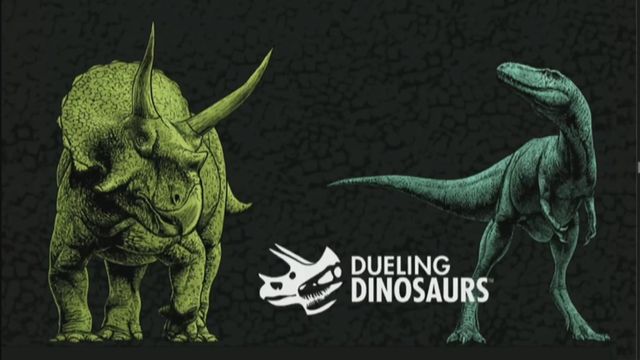After 67 million years, young and old must wait two more years to meet T. rex and Triceratops in Raleigh
The "Dueling Dinosaurs" exhibit announced Tuesday morning at Raleigh's North Carolina Museum of Natural Sciences started a ticking clock for families eager to greet the infamous beasts.
The exhibit will feature what's believed to be the most complete skeleton of a Tyrannosaurus rex ever discovered, a juvenile found buried in the same spot with a Triceratops in Hells Creek, Montana. The name comes from paleontologists' theory that the two dinosaurs fought to the death on that site.
That battle likely took place an estimated 67 million years ago. The dinos were found about 10 years ago. North Carolina dinosaur enthusiasts won't have to wait nearly so long – about two years – to see the results of that find.
Paleontologist Dr. Lindsay Zanno and her team will spend the next two years answering questions posed by the bones while a new, state-of-the-art public lab is built.
- Why are the Tyrannosaur's teeth broken?
- Where are the Triceratops' arms?
- Do stomach contents show what the animals ate?
Once the lab opens, visitors to the Museum of Natural Sciences and viewers over the internet will get to watch the team uncover more secrets buried for millenia.
The SECU Dinolab, sponsored by the State Employees Credit Union, will offer educational outreach to North Carolina school children and hands-on opportunities. Bank of America is the worldwide educational sponsor of "Dueling Dinosaurs" and will support livestreaming from the SECU DinoLab where research will be undertaken on the specimens in full public view.
"It's absolutely a dream come true," said Eric Lund, paleontology lab manager at the museum. "To stand next to something that lived 66 million years ago is absolutely amazing."
"What makes them unique is just the completeness," he said. "The juvenile Tyrannosaur is the most complete Tyrannosaur to be found in North America, which makes it absolutely a spectacular specimen, and a joy that it's here in North Carolina."
The result will be the largest public paleontology project in history.
In other museums with paleontology labs, Lund said, "There's always this glass, and you see people working inside, but you can never go inside. We're gonna break down that glass wall and actually bring visitors inside that space so they can get up close to these specimens."
"You can get up close and see what it's like to work inside a real paleontology lab here. You will also be able to talk to our team as we are conducting research on the specimen," Zanno said.
In fall 2022, the life-size fossils will go on display as part of the museum's permanent collection.
Three-year-old Rosie West can't wait. Fletcher Dreelin said he likes dinosaurs "because I like seeing the bones and everything."
"Over the past five years, we have worked tirelessly together ... to ensure that this extraordinary specimen can be enjoyed, not just by one person but by everyone everywhere," Zanno said.













